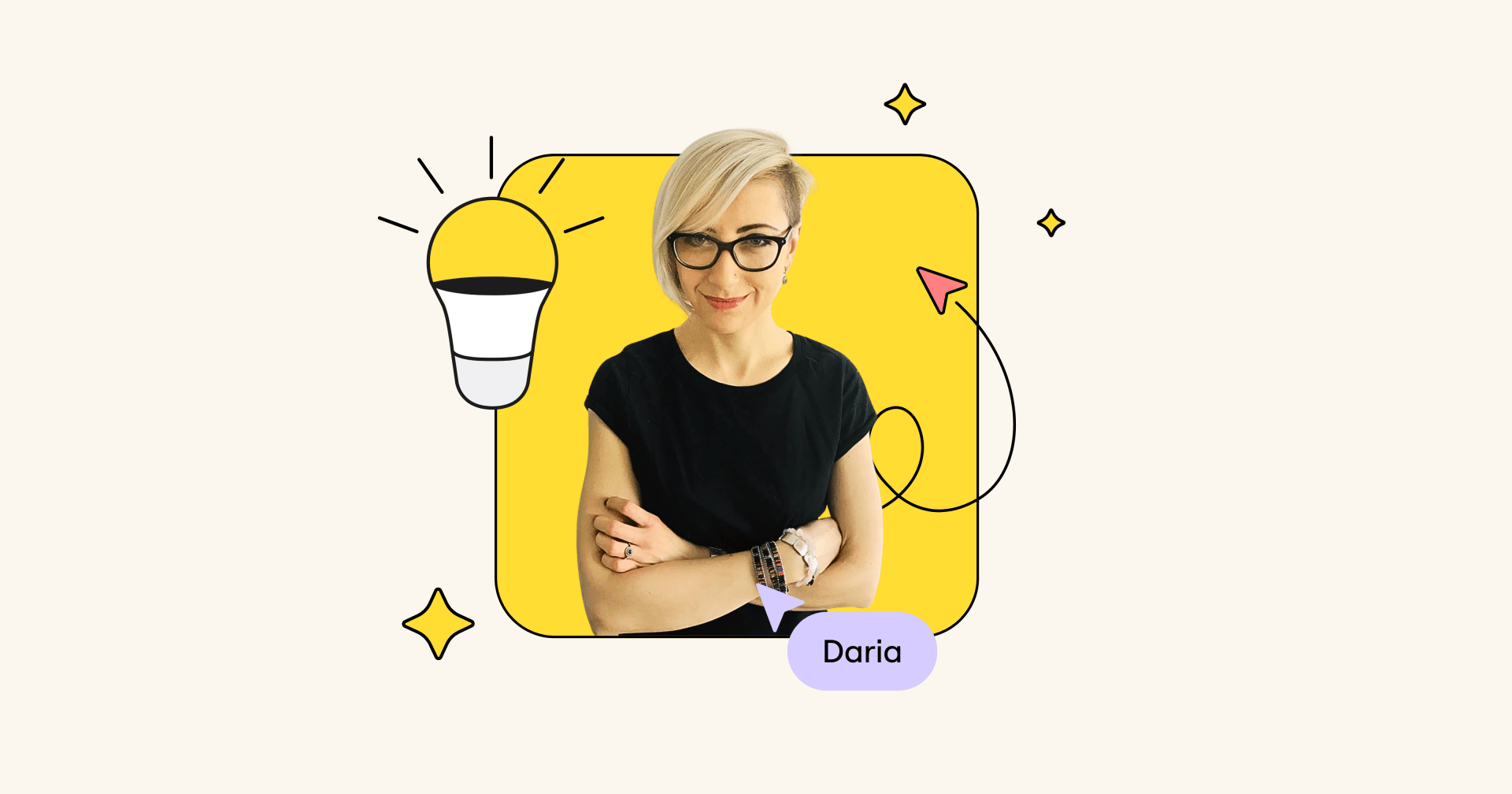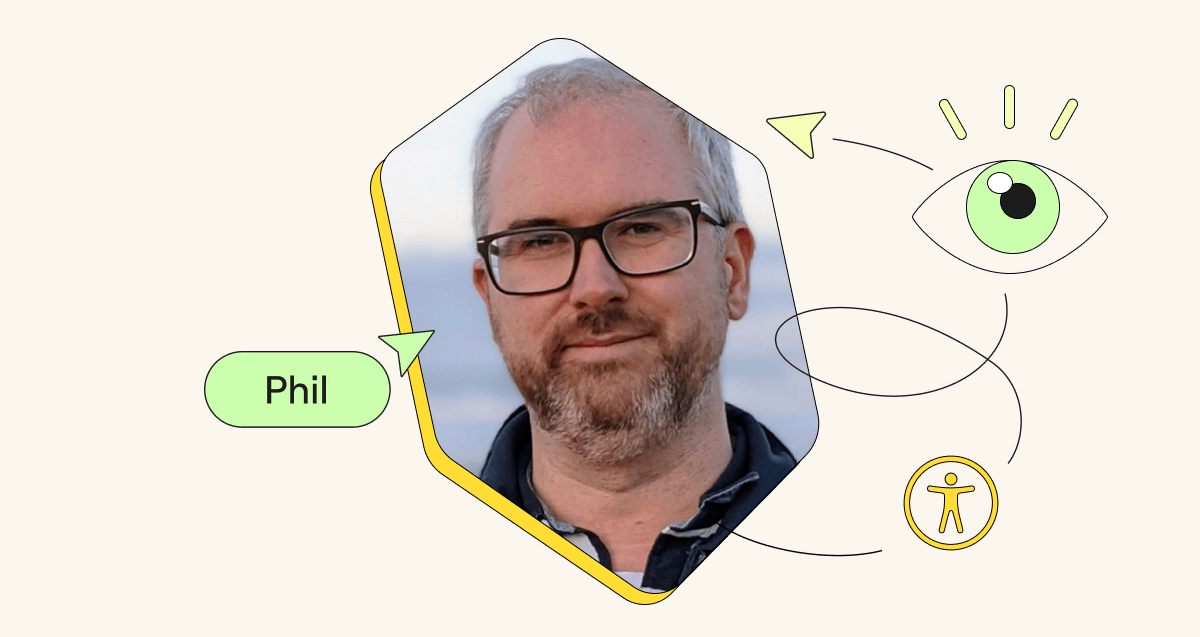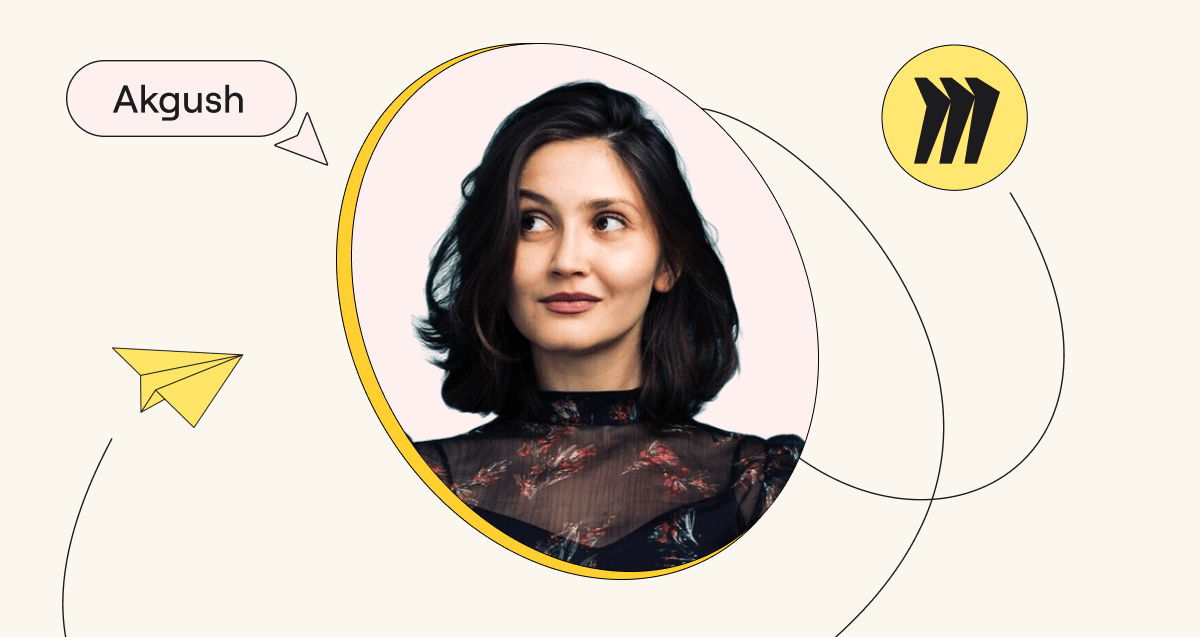Tell us a bit about your role and team here at Miro.
I joined Miro about a year ago. I was a big fan of the product before I joined so when the opportunity came, I jumped on it.
I’m now the Head of Design for our “SCA stream” which stands for Security, Compliance, and Administration. We work on what we like to call the back-office, which is everything related to how things work on the foundation side; how the users are managed, making sure that the content is secure and compliant as well as making sure that permissions, sharing, and collaborating all work very smoothly.
What is your career background and history?
I come from an architectural background. I finished my Bachelor’s in architecture and then followed it with an MBA. I stumbled upon the world of design and UX by complete accident in 2004 and started working in the gaming industry as a UI Designer.
I moved from Jordan to New Zealand and opened up a small start-up with two of my friends where we created small advertisement games. We grew very fast and decided to move to Tokyo as the market was a lot bigger there. We opened up a new branch, worked for big clients like KFC and released a game which had 1 million users clicking the play button all at the same time — that was a humbling experience!
Then I moved to Manila and opened a development house to work on automating the process of creating simple, catchy, and ad-targeted games. After 5 years of working on my startup, I moved to Germany to be closer to family and joined AWS where I spent 7 years. At AWS, I managed design for management tools; areas like security, compliance, application provisioning, and administrating your infrastructure. From there, I moved to Miro!
Can you describe your leadership style?
I tend to swing between multiple leadership styles based on what is happening in the market and the state of the business in general. However I mostly lean towards the transformational coach style of management where I try to give my team space to make their own decisions and focus on coaching and mentoring them. I find this drives innovation and gives the team the ability to think outside of the box and to be accountable for their projects.
I find it very important to be transparent and explain what’s happening within the business. When the team knows our current status and what’s going on around them, they are more likely to reach similar conclusions. If they don’t, we can have a meaningful discussion and come to a decision together. That’s how I like to manage.
However, there are times when the business needs to move quickly. In these situations, I adopt a more directive style of “let’s do this,” and explain why, while still being open to their opinions. I believe this approach is necessary sometimes, depending on the circumstances.
What do you see as the biggest challenge in leading a design team today?
At the moment the industry is shifting very rapidly, influenced by various macro and microeconomic factors. This makes it challenging to set clear expectations. We are seeing a very fast development cycle where things can change quickly. Most of our designers are juggling multiple priorities at the same time and they need to master the art of context switching.
We could be working towards a certain goal and suddenly, something happens externally or internally and you need to shift gears very quickly. The most successful designers I work with excel at this and are masters of cognitive agility, one of our Miro Mindsets. They adapt to any project, whether it’s a discovery task, collaborating with CSMs and support teams to automate processes, conducting research, or focusing on UI design. Each day brings different challenges. The team excels by shifting effortlessly with these demands and focusing on resilience. They’re seeking growth in the often uncomfortable, ambiguous times that come with today’s industry.
Tell us about the culture you have within your design team. How do you foster a culture of collaboration and innovation?
I strive to establish a collaborative culture within my team, with a healthy spice of competitiveness. As a team, we like to set time to work on projects and initiatives that are design lead and design focused where everyone can jump in and contribute. We have the mindset of working together towards a common goal — if everyone does their job well, we will all be successful.
We have weekly design jam sessions where we focus on one specific problem that someone brings. We foster a reviewing culture where if you create something and want feedback, you can bring it to a review and get other eyes on it. We also have a design-buddy system where you’re always designing with somebody else.
When it comes to learning & development, if someone utilises their L&D budget (something everyone at Miro can take advantage of, from courses to conferences), they then share their knowledge with the rest of the team either through a presentation or learning session. This approach encourages a culture of learning and sharing where we divide and conquer to bring back and teach new insights to each other.
I also find that if the team has built good personal relationships, they will be stronger when it comes to their working relationship. We add some quirkiness to what we do; we have a session every Friday called “bring your obsession to work” where the team is encouraged to bring something they really enjoy. With this, you get glimpses into each other’s lives and not just as someone you work with. We also have a very prestigious prize called the “Martini Cup” (inside joke!) and anyone can give it to someone as an appreciation token. It’s something we hold very highly as a team.
These little things we do together help us be a stronger unit. If the team works well together, my job as a manager becomes much easier. We have established processes and rituals, so even if I’m away for a month, they can continue smoothly. They created these methods themselves, it wasn’t me dictating them. This ownership fosters natural harmony and frees me to focus on broader aspects of the business, like setting the vision and collaborating with peers, rather than micromanaging daily tasks.
Security, Compliance, Administration Design team
What strategies do you use to keep your design team motivated and engaged?
In addition to fostering these personal relationships, carving out time to work on design lead projects is important. This approach empowers team members to proactively identify and address issues, driving initiatives forward independently, rather than waiting for direction from others or relying on product managers.
Taking the time to engage in other initiatives that are not work related is also important. For example, at an offsite we will do a design thinking exercise. Last time somebody brought up the idea of creating a chicken feeder app which is not at all related to what we do at Miro but the idea is for the team to foster a mindset; breaking a problem into smaller pieces and learning to collaborate effectively. It’s often harder to master working together than it is to complete tasks individually.
When I began as a manager, I relied heavily on personality tests and questions to better understand my team; like who prefers mornings or evenings, and their problem-solving approaches. Using these tests — for example the High 5 personality trait test — as icebreakers, allowed me to learn a lot about people’s preferences and working styles. Knowing these details allowed me to build strong relationships with the team and treat each team member as an individual and know their motivation. This understanding enabled personalized development plans instead of a one-size-fits-all approach.
What qualities do you look for when hiring new members for your design team?
One of the biggest qualities I look for, across all levels, is a person’s willingness to learn. I always ask the question “What is the last thing you learned?” or “What do you want to learn?”. This gives me a good perspective on whether they have an eagerness to learn and hunger to know how things work.
As a designer, it doesn’t matter what your level is — I’ve seen it from interns through the executive level — the willingness to learn is constant in order to succeed. Then, depending on your level, it’s also important to be able to work autonomously and effectively collaborate with the team.
There’s a really big factor to consider when thinking about what you bring to the team. My role as a manager is to make sure that my team is very coherent. I have a skills matrix where I understand what skills are strong and present in the current team and what is missing. When I’m hiring, I then look for what gaps I’m missing in my team.
I believe there is no one designer that is a unicorn and 100% perfect — but I believe as a team we are the perfect designer because each individual plugs a gap. This is my mindset when it comes to hiring.
What advice would you give to aspiring design leaders?
I’m very straightforward and don’t see things as simply black and white. Many designers, when they move into leadership or management roles, tend to view success in binary terms — either successful or not. I’ve found this isn’t true. In my career as a manager and leader, there have been times when I learned I could have done things differently and times when I made the right decision.
It’s important to consider the context, evaluate the situation, and determine the best possible solution and outcome. I advise new managers to think two steps ahead. Some decisions might not seem beneficial in the short term, but considering the long-term impact can reveal their true value. This approach helps in making more strategic decisions that lead to long-term success.
Another important consideration is trust. Your role as a manager is to lead, to coach, to mentor, and not to do the work yourself. You’re not an IC anymore — empowering and trusting your team to execute is super important.
Progress takes time and learning is bi-directional. You take two steps back to go three steps ahead and then you will go back again. The mindset of seeing learning as a one-directional upwards curve is the biggest pitfall for new leaders. View it instead as a cycle.
Let’s finish by telling us some fun facts about you
With my gaming background, I now play a lot of board games. I spent every day in lockdown playing one particular game: Arkham. I’m also a dancer, I like to read a lot, and I’m a cook — I probably have every single spice you’ve ever thought of in my cabinet.
Interested in joining the design team at Miro? Check out our open roles.



